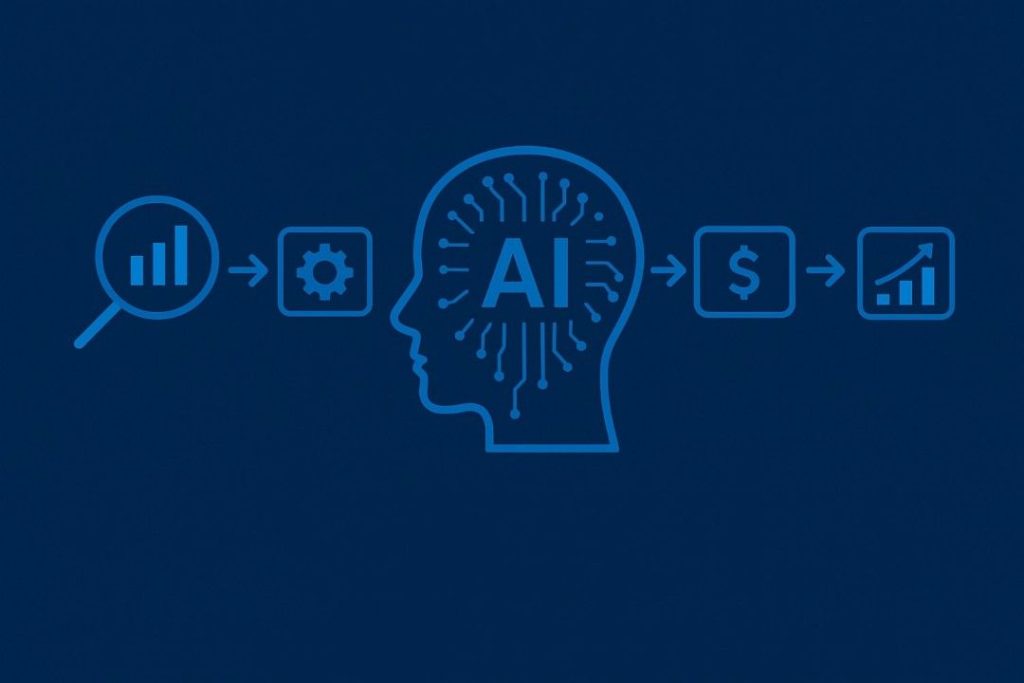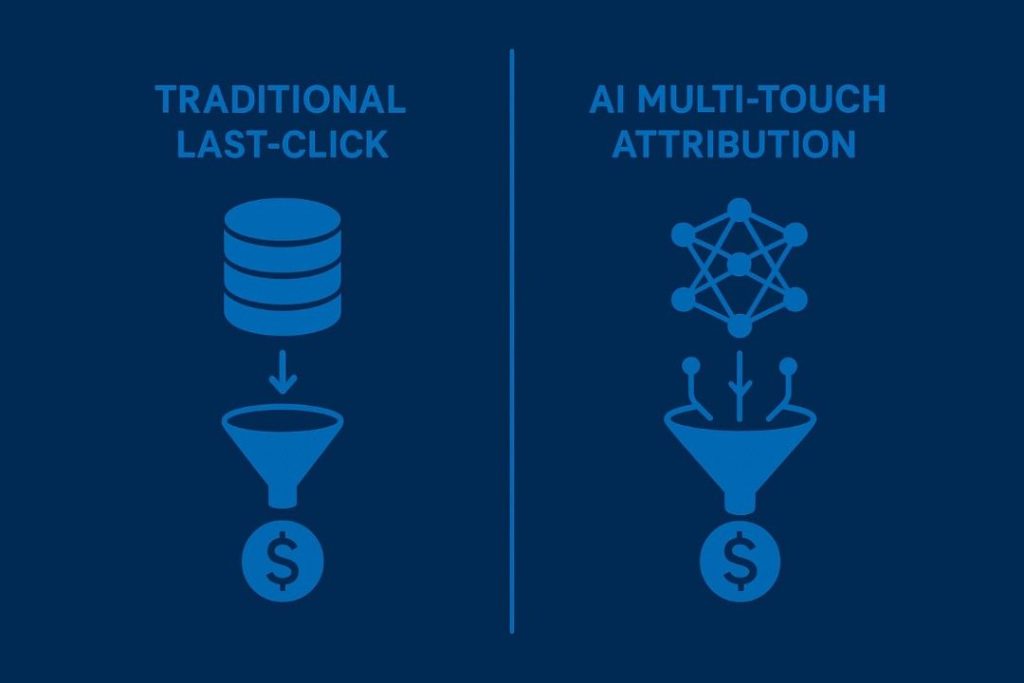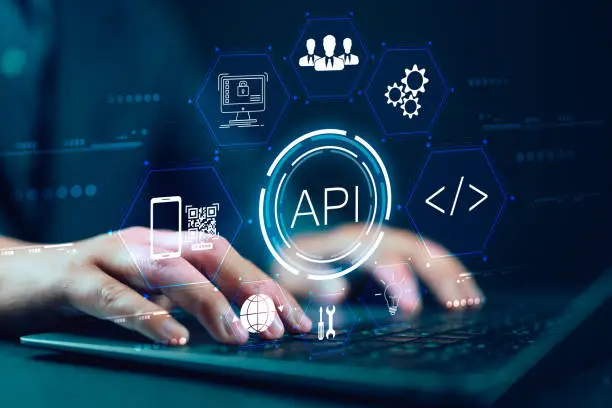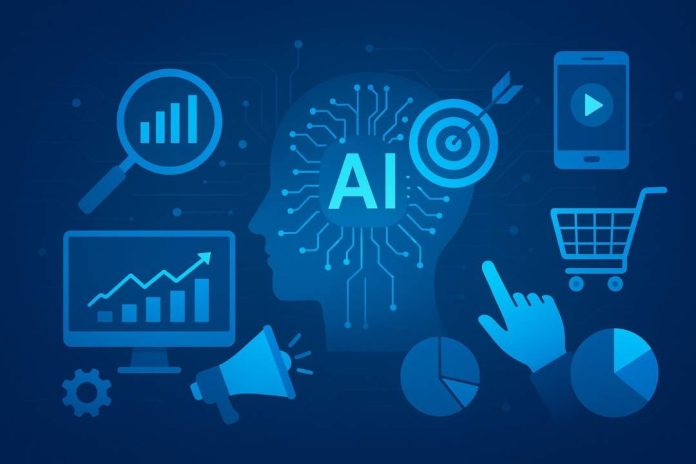Digital advertising has evolved into an intelligent, data-fueled ecosystem where algorithms, machine learning, and real-time analytics define success. In 2025, performance marketing is no longer about simple bid adjustments or pixel-based attribution it’s about building adaptive systems powered by artificial intelligence (AI), first-party data, and cross-channel orchestration. Every campaign is now a living system that learns, predicts, and optimizes autonomously. Understanding these transformations is no longer optional; it’s the deciding factor between scalable ROI and inefficient ad spend.
Table of contents
- 1. AI-Powered Campaign Optimization: The New Operating System for Advertising
- 2. Privacy-First Targeting and the Rise of Intelligent Data Infrastructure
- 3. Retail Media, Commerce Ads, and AI-Powered Marketplaces
- 4. AI-Enhanced Attribution and Cross-Channel Intelligence
- 5. Creative Personalization at Machine Speed
- 6. The Short-Form Video Revolution Meets AI Storytelling
- 7. Server-Side Tracking and Conversion APIs: Data Integrity in a Cookieless World
- 8. Ethical AI and Sustainable Advertising Ecosystems
- 9. Predictive Programmatic 3.0: The Algorithm That Plans Ahead
- 10. Data Visualization, AI Analytics, and Radical ROI Transparency
- Final Thoughts: The AI-First Era of Performance Marketing
1. AI-Powered Campaign Optimization: The New Operating System for Advertising

AI’s role in campaign optimization has evolved beyond automated bidding or segmentation. Today, machine learning models analyze behavioral patterns, predict audience intent, and dynamically adjust budgets, ensuring brands stay agile in a rapidly changing digital ecosystem. According to Gartner, by 2026, more than 80% of enterprises will have used generative AI APIs or deployed generative AI-enabled applications in production a clear indication that AI is not just transforming marketing but redefining the operating model of modern advertising. This rapid adoption underscores the growing importance of automation and predictive intelligence for digital advertising success.
Modern marketers are leveraging predictive analytics to accurately forecast customer lifetime value (LTV), churn probability, and purchase intent. AI models trained on CRM and product data now identify high-value audiences weeks before they convert. For SaaS and e-commerce brands, this means shifting from vanity metrics like impressions or CTR to profit-focused signals such as marginal revenue per impression.
According to the Aimers Marketing Blog, top advertisers in SaaS and e-commerce now rely on predictive analytics to understand lifetime value (LTV) and optimize for the most profitable audience segments rather than vanity metrics like clicks or impressions.
2. Privacy-First Targeting and the Rise of Intelligent Data Infrastructure
With Google’s final phaseout of third-party cookies and tightening data regulations worldwide, the advertising ecosystem is transitioning to a privacy-first framework. But rather than weakening performance tracking, this shift is accelerating innovation. Brands are now building first-party data ecosystems that merge CRM records, product usage data, and behavioral analytics.
AI enables this transition by filling the attribution gaps left by cookie loss. Machine learning models trained on aggregated event data can predict conversion probabilities even when user-level identifiers are unavailable. Predictive audiences, synthetic data modeling, and probabilistic attribution are replacing traditional pixel-based retargeting.
Forward-thinking brands collaborate with a Performance Marketing Agency for SaaS, such as Aimers Agency – Performance Marketing Agency for SaaS, to implement privacy-compliant tracking systems that still enable deep funnel attribution.
3. Retail Media, Commerce Ads, and AI-Powered Marketplaces
Retail media networks Amazon Ads, Walmart Connect, Instacart Ads, and Target Roundel have become essential components of the digital advertising stack. They combine transactional intent with first-party shopper data and closed-loop attribution. What’s transforming these platforms now is AI-driven inventory matching and predictive merchandising, enabling advertisers to align product visibility with in-market.
For SaaS and B2B brands, analogous “intent ecosystems” are emerging through AI-curated content syndication and review platforms. Platforms like G2, TrustRadius, and industry newsletters are integrating predictive ad placements that use machine learning to identify companies in an active buying cycle. This evolution marks the rise of contextual commerce advertising, powered by predictive algorithms that know when, where, and how to surface the right offer at the precise moment of intent.
4. AI-Enhanced Attribution and Cross-Channel Intelligence

Traditional last-click attribution is obsolete. The modern marketer operates in a landscape where consumers interact across 10–20 digital touchpoints before converting. AI-based multi-touch attribution models now use Bayesian inference and causal analysis to determine the actual incremental contribution of each channel search, social, email, or programmatic to the final sale.
Machine learning enables marketers to shift from reactive reporting to predictive budget allocation. These models not only analyze past performance but also forecast future returns by identifying saturation points and marginal efficiency thresholds. A cross-channel AI attribution model might reveal, for example, that an extra $10,000 invested in retargeting yields diminishing returns while reallocating that budget to mid-funnel content increases LTV by 18%.
The result: media plans that adjust themselves, continuously learning which channel combinations drive compound ROI.
5. Creative Personalization at Machine Speed
In 2025, creativity has become a data science discipline. AI-driven Dynamic Creative Optimization (DCO) systems now generate and deploy thousands of ad variations in real time, adapting visuals, copy, CTAs, and even tone based on user intent and engagement patterns.
Natural language generation models (like GPT-based engines) craft personalized headlines that reflect browsing history, purchase stage, or industry role. A SaaS ad targeting a CTO might emphasize “scalable data security,” while the same ad for a startup founder highlights “affordable automation.”
This personalization operates at machine speed: generative AI systems test, learn, and redeploy creative assets autonomously, identifying top-performing variants before humans can analyze results. Marketers integrating these AI creative loops into their workflows report up to 60% faster optimization cycles.
6. The Short-Form Video Revolution Meets AI Storytelling
Video continues to dominate digital engagement, but the real innovation lies in how AI is reshaping its creation and distribution. Short-form formats like TikTok, YouTube Shorts, and Instagram Reels are now the center of brand storytelling.
AI video editors can instantly generate 10-second versions of long-form content, overlay captions, auto-cut highlights, and even localize for global markets. Predictive models analyze viewer attention data, eye-tracking, scroll velocity, and sound engagement to determine optimal pacing and frame sequencing.
The next frontier: AI-driven narrative adaptation, where machine learning systems rewrite scripts, reorder shots, and personalize video storylines. Shoppable and interactive video ads powered by generative AI are redefining performance metrics from “views” to “purchase-ready interactions.”
7. Server-Side Tracking and Conversion APIs: Data Integrity in a Cookieless World

As browsers limit traditional tracking pixels, server-side architecture has become the backbone of accurate performance measurement. Conversion APIs (CAPI) from Meta, Google, and LinkedIn ensure robust data transmission directly from your server to ad platforms, bypassing browser restrictions.
AI enhances this system by identifying and reconciling signal discrepancies, detecting missing conversions, modeling drop-off behavior, and predicting unseen interactions. Advanced SaaS marketers are now deploying AI attribution middleware that validates, cleanses, and harmonizes conversion data streams in real time.
8. Ethical AI and Sustainable Advertising Ecosystems
As AI takes over creative generation, targeting, and optimization, the industry faces new ethical responsibilities. Algorithms can inadvertently amplify bias, over-personalize experiences, or create data inequalities. In 2025, brands are being judged not only by performance outcomes but by how responsibly they deploy automation.
Marketers are embracing AI governance frameworks, establishing ethical review protocols for model training, audience segmentation, and creative output. Sustainability is also entering the digital conversation: carbon-neutral ad platforms, renewable-energy-powered data centers, and eco-conscious media planning are emerging as competitive differentiators.
9. Predictive Programmatic 3.0: The Algorithm That Plans Ahead
Programmatic advertising has entered its third generation, Predictive Programmatic 3.0, where AI doesn’t just react to impressions but forecasts audience intent days or weeks in advance. Predictive bidding algorithms now analyze historical conversion curves, seasonality, and contextual signals to anticipate which cohorts are most likely to engage tomorrow, not just today.
For performance marketers, this means fewer wasted impressions, more intelligent spend allocation, and continuous real-time experimentation. AI-driven demand-side platforms (DSPs) are integrating reinforcement learning agents that autonomously test bidding strategies, adjusting to market shifts, auction dynamics, and competitor behavior faster than any human trader.
These systems are also integrating generative AI to automatically design ad variants based on emerging trends and an entirely self-learning, creative-aware programmatic loop.
10. Data Visualization, AI Analytics, and Radical ROI Transparency
The future of performance marketing is visible literally. Clients demand real-time, AI-powered dashboards that reveal where every dollar flows and how every channel contributes to pipeline growth. Advanced analytics suites now integrate data from Google Ads, Meta, LinkedIn, and CRM systems into unified, interactive dashboards enriched by machine learning insights.
Instead of static reports, AI now performs anomaly detection, cohort analysis, and causal inference, surfacing hidden correlations. Such as which creative type drives the highest retention rate or which audience segment yields the best LTV-to-CAC ratio.
Agencies like Aimers are developing proprietary analytics layers that integrate attribution modeling, creative intelligence, and conversion lift measurement.
Final Thoughts: The AI-First Era of Performance Marketing
The future of digital advertising isn’t simply automated, it’s autonomous. Performance marketing is evolving from tactical optimization to strategic orchestration powered by AI ecosystems that learn, predict, and self-improve.
Success will depend on mastering the intersection of creativity and computation, where machine learning provides precision, and human insight shapes narrative relevance. As AI handles executional efficiency, the performance marketer’s new role is to define the ethical, strategic, and experiential vision.
Those who embrace this AI-first transformation, integrating predictive intelligence, automation, and privacy-first measurement, will redefine not just campaign success but the future architecture of digital advertising itself.











